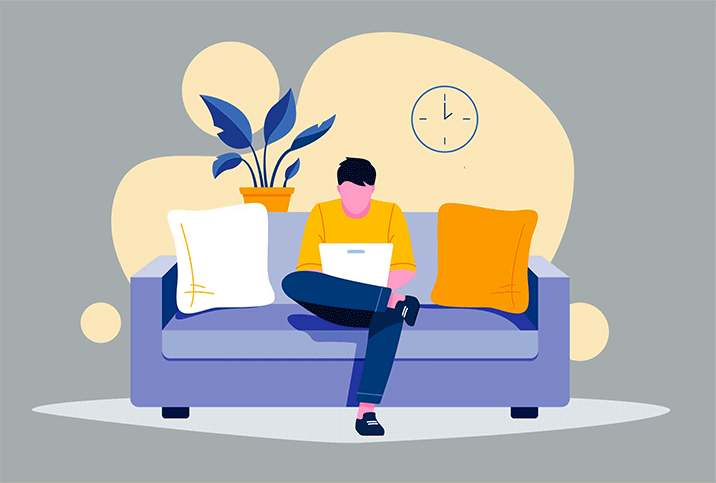When You Have to Move: Restless Legs Syndrome

A restful night's sleep can elude us for many explainable reasons including too much caffeine too late in the day, stressful concerns about work and family or even related health challenges like obstructive sleep apnea.
However, adding another condition to the mix can quickly snowball into a myriad of issues that can adversely affect your overall health.
Do we know the cause?
Restless legs syndrome (RLS) is a neurological condition that causes uncomfortable feelings such as tingling or pulling in the legs, along with a compelling urge to move your legs, usually while sitting or lying down, and typically at night.
Risk factors for restless legs syndrome include family history, iron deficiency, uremia—a condition where you have high levels of waste products in your blood—due to kidney failure, neuropathy, spinal cord disease, having multiple sclerosis or Parkinson's disease. Pregnancy and hormone-related changes can also worsen the condition. Finally, women are more likely to have RLS than men.
"It's unclear what exactly causes restless legs syndrome," said Odelia Lewis, M.D., a family physician based in Brooklyn, New York. "The most widely accepted theory is that restless legs syndrome is due to low central nervous system iron stores. Another lesser accepted theory is that it's due to problems within the dopaminergic centers of the brain."
Regardless of the cause, though, RLS can seriously hamper your quality of life.
Eve B, an entrepreneur from Southern California, said she "had extreme pain in my legs that had been exacerbated after a horrific car accident I had been in eight months before. Prior to the accident, I would have pins and needles in my legs and feet that would make me have to move them all the time, even kicking my partner in my sleep at times. It seemed to only happen badly when I was really stressed.
"After the accident, when [symptoms] increased, we had attributed the pain to nerve damage from both my hips being fractured," Eve B. explained. "My doctors sent me in for nerve tests and when they got down to my legs I jumped off the table with the first touch. That was only part of the pain, we found out, as this diagnosis eventually led to the continued diagnosis of fibromyalgia that explained the rest of my pain and the joint issues that accompany the restless leg symptoms."
In most cases, restless legs syndrome is characterized by sensations that begin after falling asleep, get worse at night and are relieved by movement.
"[It feels like] extreme pins and needles up and down my legs and into my feet, like fire at times," Eve B. added. "The subconscious need to move my legs, especially my feet and ankles, led to the tingling increasing to a level of discomfort and pain that would even wake me out of my sleep. 'Anxiety in my legs' is the best description I've used that people have understood."
Adjusting your lifestyle for RLS
Treatment for restless syndrome requires the use of medications as well as quite radical lifestyle changes in some cases.
"Medication classes used to treat this condition include dopamine agonists, like ropinirole and pramipexole; calcium channel blockers, like gabapentin and pregabalin—and opioids like tramadol and oxycodone," Lewis said.
Of course, these lifestyle changes vary from person to person.
"If I eat anything with too much processed white sugar or aspartame it triggers my legs, so I have to watch my diet," Eve B. said. "Anxiety will also set them off. Restless legs syndrome can turn around and trigger my anxiety, so it can turn into a big cause and reaction cycle at times."
Mild cases of RSL can be helped with simple adjustments like avoiding (or limiting your intake of) caffeine, tobacco and nicotine. Additionally, you should exercise regularly and engage your mind with distracting activities (such as talking to people, needlework or video games) when you have to remain seated.
Homeopathic remedies include temperature modulations like taking a hot or cold bath or using heat or ice packs. Patients may also consider walking or stretching and massaging the legs. Staying asleep is crucial for minimizing other secondary effects a lack of sleep can cause. To that end, try the following:
- Practice sleep hygiene by keeping your sleeping area cool, quiet and dark.
- Try to engage in a mentally challenging or distracting activity before bed, such as a crossword puzzle.
- Remove devices from your sleeping area that can disrupt sleep, such as TVs, computers and phones.
Restless legs syndrome isn't a well-known or well-understood condition. However, your family and friends likely already know of your symptoms, which gives you an opportunity to educate them about what's going on and allow you to ask for help and support.
Plan to reassure everyone that your constant need to move isn't you being rude, but rather a physical necessity. Explaining the same thing to coworkers and employers may also be beneficial, especially as you start making lifestyle changes that will mitigate your symptoms.


















